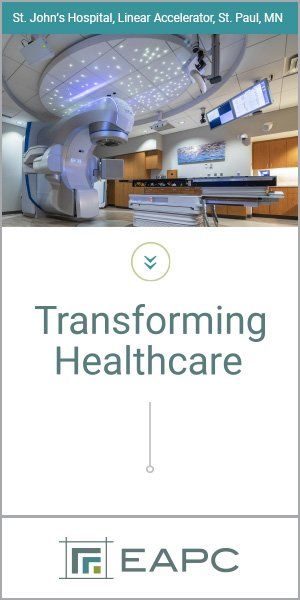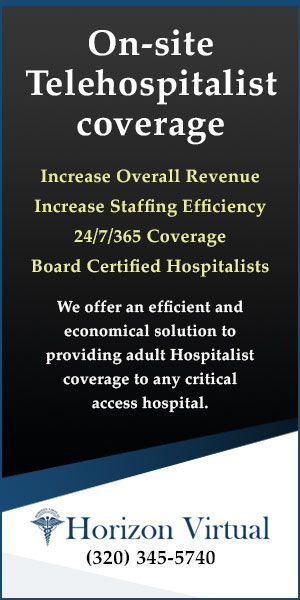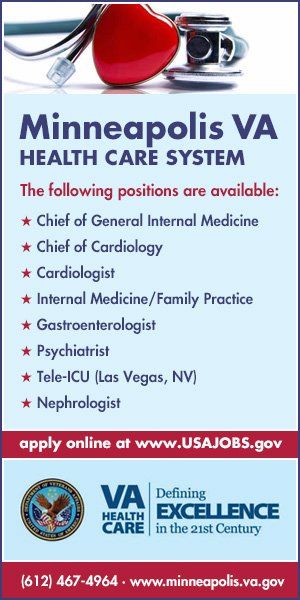Capsules
Mayo Reports $19.8 Billion 2024 Operating Revenue
The Mayo Clinic recently released financial data from 2024 showing the health system recorded revenue of $19.8 billion in the 12 months ending Dec. 31, up from $17.9 billion in the same period last year. Operating expenses totaled $18.5 billion in 2024, up from $16.9 billion in 2023. Salaries and benefits totaled $10.5 billion, up from $9.7 billion in 2023. Supply and service expenses totaled $6.7 billion, up from $6 billion in the prior year. The report noted that the health system had cared for patients from every state and 135 countries, including 155,000 surgical patients, an increase of more than 3% from 2023. “Mayo Clinic’s success in 2024 reflects the innovative spirit of our exceptional staff and their dedication to meeting our patients’ changing needs,” said Mayo Clinic president and CEO Gianrico Farrugia, MD. “Our teams are providing unparalleled care while also discovering new cures and scaling them to improve the lives of people around the world.” In 2024, new initiatives included recognition payments for all staff, financial counseling services, enhanced mental health support, an expanded medical plan network and a refreshed recognition program — all designed in response to staff feedback. “Our staff are our greatest strength, and we invested significantly in them in 2024 and took intentional steps to demonstrate how much we value their commitment,” said Christina Zorn, chief administrative officer of Mayo Clinic. In 2024, Mayo Clinic advanced critical design and enabling work ahead of construction for Bold. Forward. Unbound. in Rochester, which will introduce 1.8 million square feet of new flexible, digitally enabled clinical space, a state-of-the-art logistics center and two reimagined arrival facilities that will transform the patient experience from the moment patients arrive on campus. Other highlights of the report included:
- Engaged more than 1.04 million outpatient digital appointments, an increase of more than 17% from 2023.
- Educated 4,800 students enrolled in programs across Mayo Clinic College of Medicine and Science in the 2024 academic year.
New Study Addresses Rural Mental Health Care
Wilderness Health, a coalition of eight rural health hospitals and health care providers, recently released data from an ongoing project to improve mental health care in outstate Minnesota. Through hosting five community listening sessions across northeastern Minnesota, they invited community members to share concerns. The goal was to share experiences navigating mental and behavioral health care and identify strategies for change. Wilderness Health utilized the ORID (Observe, Reflect, Interpret, and Decide) method to lead the sessions. ORID is a facilitation method that involves focused conversations to reach agreement or clarify differences. Participants grouped similar ideas, leading to categories of strategies for change. Solutions and strategies for change were reviewed from each session and combined to create overarching regional strategies. The research identified several areas to address, including:
- Improving fair and equitable access, expanded affordable accessible mental health services, increased transportation options for care, strengthening community-based support networks, cultural competency in care and systemic changes.
- Access to care and factors that make it inaccessible, including shared barriers, transportation disparities, a lack of providers, no or limited insurance, as well as navigating health care systems that are often very confusing.
- Creating safe and inclusive community spaces, strengthening crisis and emergency support systems, improving access to resources and services and reducing isolation while strengthening social reintegration.
- Recruiting and retaining workforce, increasing supply, improving work conditions and strengthening first responders support.
- Advancing integrated health system changes, including enhanced care coordination and communication, implementing electronic health record (EHR) improvements, expanding access to emergency and crisis care and promoting a holistic, patient-centered approach.
- Addressing patients with feelings of shame, inadequacy and judgment of self and others. Increasing acceptance and reducing stigma including changing perceptions and normalizing mental health conversations and community engagement.
- Enhancing early detection, including routine mental health screenings, expanding access to preventive mental health care, reducing barriers to diagnosis and care and education on recognizing early symptoms of mental health conditions
- Implementing a trauma-informed intake process which includes a safe, respectful experience, streamlining and simplifying intake, that includes access to health records.
- Keeping the community involved is key to advancing rural health. Members, community groups and patients are needed to guide this work.
Hennepin Healthcare Resident Physicians File for Unionization
Recently, a supermajority of the more than 200 resident physicians employed by Hennepin Healthcare filed for union recognition with the Committee of Interns and Residents (CIR/SEIU) — the largest physicians’ union in the country. Facing grueling working conditions while caring for patients across Minnesota and beyond, the young doctors say they are unionizing to gain a mechanism to radically shift both physician well-being and quality of care. They are calling on Hennepin Health to recognize their union voluntarily and to begin negotiations for a fair first union contract right away. “We came to Hennepin specifically because we wanted to work in a safety net hospital caring for this community, and so all of the residents care so deeply and dive headfirst into our work,” said Dr. Nicole Lund. “But we are stretched so thin, and the truth is, it doesn’t have to be this way. Residents are Hennepin–we know this hospital–so with a voice and input into decisions about our working environment, we hope we can win support to better care for ourselves, our families, and our patients.”
The doctors say that system leadership overworks and underpays resident physicians to overcome massive gaps in staffing and resources, leaving the doctors exhausted, burnt out, and in a state of chronic financial stress. Working at the center of care at Hennepin County Medical Center (HCMC), Minnesota’s only level-one trauma center, as well as at dozens of other facilities statewide, the physicians treat many patients facing high barriers to care, including folks without insurance, working class patients of color, immigrant patients, and Native American patients traveling from reservations. Regularly working up to 80 hours a week on pay that amounts to as little as minimum wage per hour, the doctors struggle to afford to live in Minneapolis with basic needs like haircuts seeming like luxuries. Conditions are particularly difficult for physicians who have children or who are planning to start families, with parents scrambling to afford childcare and pregnant physicians describing a management culture that feels hostile to their basic needs.
Medical Debt Reset Act Introduced
Following on last year’s successful collaboration between the City of St. Paul and Undue Medical Debt, a Long Island City-based nonprofit focused on eliminating personal medical debt, legislation was recently introduced to forgive debt to qualifying individuals statewide. A one-time appropriation of $5 million in legislative funding could forgive up to $500 million in medical debt for between 250,000 and 400,000 Minnesotans. The Minnesota Medical Debt Reset Act (SF1347), introduced by Attorney General Keith Ellison, Sen. Liz Boldon (DFL) and Rep. Liz Reyer (DFL), addresses debt that has been deemed unrecoverable by health care organizations and offers, on average, $1 to relieve up to $100 in medical debt. Some providers with large debt profiles will sell the debt in bulk at a massive discount. Undue Medical Debt works with providers and commercial debt buyers to purchase that uncollectable medical debt in bundled portfolios for pennies on the dollar, then erases it. “Medical debt isn’t like other types of debt,” said Boldon. “No one chooses to have an extended stay in a hospital. No one plans on having their appendix burst or having a heart attack. Medical expenses shouldn’t be treated like a loan for a business. It doesn’t have to be this way.”
“We know that medical debt triggers additional forms of consumer debt and adds great stress to people’s lives,” said Reyer. “I’ve seen this in my family and my community. The Minnesota Medical Debt Reset Act lifts this burden while also helping Minnesota’s hospitals. It’s truly a win-win that will help all communities across the state.” Relief criteria include a household income at or below 400% of the Federal Poverty Guidelines and medical debt equal to or exceeding 5% of household income. There are no income tax liabilities or obligations, and there are no strings attached. Within the past five years 54% of Americans carry or have carried medical debt with an estimated total now reaching $220 billion. Medical debt or the fear of it can cause many to delay seeking medical care, which can lead to worse and more costly health outcomes.
MN GOP Legislation Introduced to Limit Health Care Access
Minnesota is the fourth leading state in America in terms of total agricultural exports with production of over $25 billion in 2023 (crops and livestock combined). An integral part of this success has involved seasonal workers and very progressive policies supporting undocumented residents. As early as the mid 1930s the importance of keeping these workers healthy was clear and free clinical care for them was available in greater Minnesota. As time passed, the state developed some of the most inclusive laws in the country to support undocumented residents. Notwithstanding, Republican members of a House committee recently advanced legislation (HF10) to remove undocumented immigrants from state-funded health care, scholarships and other programs. State Rep. Isaac Schultz, R-Upsala, says his bill preserves Minnesota programs for legal Minnesota residents. All 11 Republican committee members voted to remove the undocumented from state health care and other programs, and all 10 Democrats voted no. Health care providers, including hospitals, testified that keeping an estimated 7,700 undocumented residents on MinnesotaCare keeps costly emergency room visits down. The Minnesota Farmers Union testified that farmers need undocumented workers, and that the workers need health care. The bill’s sponsor says this measure would save the state an estimated $100 million in health care costs. The bill did not take into account that in 2022 alone, Minnesotans without legal status contributed $221 million in state and local taxes, supporting the very systems HF10 now tries to limit. It also failed to address how it could immediately and disastrously impact $25 billion in agricultural production. The bill has been strongly opposed by several health care groups including the Minnesota Medical Association (MMA), the Minnesota Hospital Association, the Minnesota Council of Health Plans and the Minnesota Catholic Conference. Beyond the simple ethical and moral duty to provide health care, the MMA stressed a financial consideration stating in a letter, “By ensuring coverage of all Minnesotans, regardless of immigration status, we reduce the total number of emergency room visits, reduce rates of untreated chronic conditions, and most importantly, help ensure that Minnesota communities are healthier.”
Community Health Centers Face Uncertain Future
Community health centers have always dealt with being underfinanced while fulfilling a vital role in the health care delivery ecosystem. By providing care to the uninsured and those marginalized by corporate health system policies, they work behind the scenes to help those who most need it. They are located in medically underserved areas and provide medical, behavioral, health and dental services, regardless of ability to pay. Federal funding is an important element of their operation and recent presidential executive orders have created significant concern around the future of this funding. While a federal judge recently paused Trump’s funding freeze, what he might do next is problematic to all. Minnesota Community Health Centers (MCHC), which includes 17 centers across the state, is among hundreds of organizations potentially at risk of losing funding. Nationally almost 1,500 centers provide care to over 33 million Americans who are potentially at risk for losing health care access. In Minnesota, funding cuts could exceed $45 million, nearly 20% of the MCHC budget. There is no “plan B” and the only responses are reduced services and shuttered sites.
MCHC, and others like them, help keep patients out of emergency rooms, avoid hospitalizations and avoid needing specialty care, all of which lowers the overall cost of care, especially to the Medicaid program. With Trump seeking a $2 trillion reduction in Medicaid spending there is justifiable concern among patients and providers alike. Though Trump and Robert F. Kennedy Jr. have publicly stated support for community health center funding, it is difficult to gauge how sincere anything they say may be. In a recent interview with NPR, Jonathan Watson, MCHC CEO, said of the recent Kennedy confirmation hearings, “I think he brought to the forefront the role of chronic diseases in spending. In our $4.9 trillion health care system for every dollar spent, only $0.05 or $0.07 is spent on preventative care. If we could double or triple that, that’s a strategy to really combat chronic diseases. He’s spot-on correct about that. And community health centers have a profound role on that.” Every element of health care delivery shares similar concerns over ill-informed, unconsidered and capricious federal policies.
MORE STORIES IN THIS ISSUE
cover story one
Volatile Organic Compounds: A beacon of hope
By David R. Brown, MD, DSc, Bradley S. Miller, MD, PhD and Andre Lamontagne, BEE, MBA
cover story two
The Future of Biomedical Research: A new presidential advisory from the American Heart Association






























